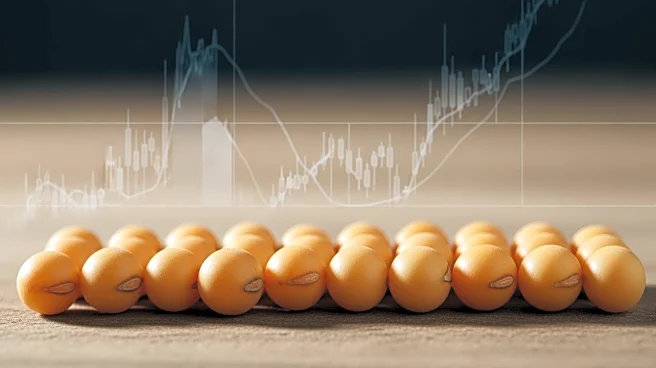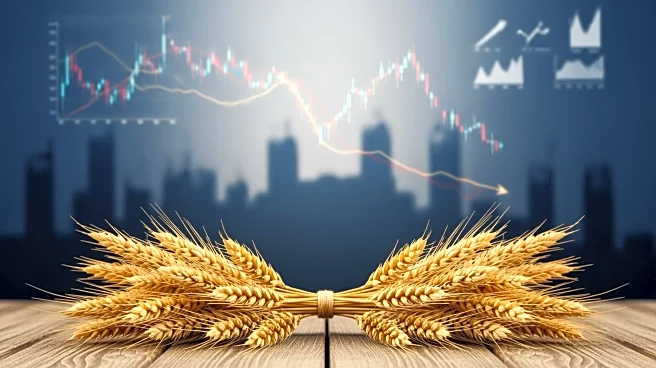What's Happening?
Soybean prices have seen an upward trend, with January soybeans closing up 9½¢ at $11.17 per bushel. This marks a week-over-week increase of 1¾¢. The rise in soybean prices comes amidst a mixed performance in other agricultural commodities, with December
corn ending the week down 4¼¢ and various wheat contracts showing varied results. December live cattle and January feeder cattle also experienced price increases, while December lean hogs saw a slight rise. The broader market showed fluctuations, with crude oil prices increasing and the S&P 500 Index and Dow Jones Industrial Average experiencing gains.
Why It's Important?
The increase in soybean prices is significant for farmers and traders, as it reflects market dynamics and potential shifts in supply and demand. Higher soybean prices can lead to increased revenue for producers, impacting agricultural economies and influencing planting decisions for the upcoming seasons. The fluctuations in commodity prices also affect related industries, such as livestock feed and biofuel production, which rely on stable input costs. Additionally, the broader market movements, including changes in crude oil prices and stock indices, indicate economic trends that could influence investment strategies and consumer confidence.
What's Next?
Market participants will continue to monitor commodity prices closely, as they can be influenced by various factors, including weather conditions, geopolitical events, and trade policies. Farmers may adjust their crop planning based on price trends, while traders and investors will look for opportunities to capitalize on market movements. The agricultural sector may also see shifts in export demand, particularly if international markets respond to price changes. Additionally, broader economic indicators, such as stock market performance and crude oil prices, will be watched for signs of economic stability or volatility.













